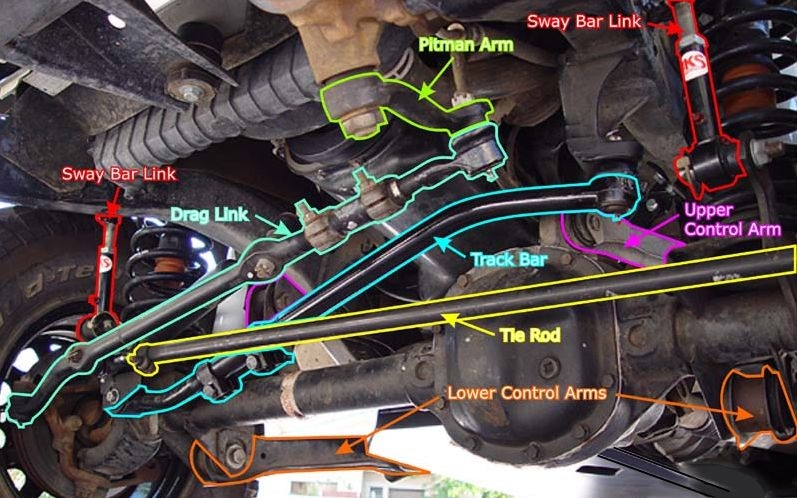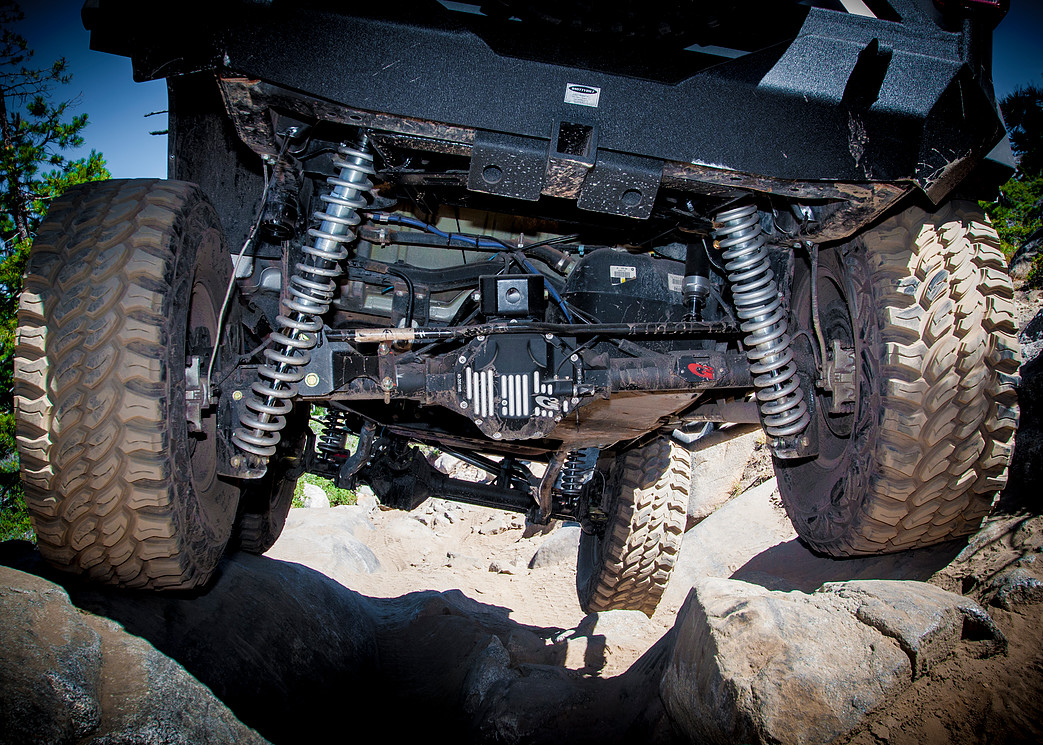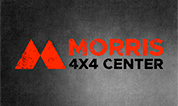Jeep Death Wobble Suspension Woes
There's a whole family of parts that can attribute and cause a Death Wobble issue. I don't mean "family" like say, the Brady's. I mean like the Addams Family when Gomez causes a train wreck. But today, we're going to take a quick look and single out one part in particular, one possible component of a wobble: the Jeep Track Bar. First, let's get familiar with what a Track Bar is. Below is an example for a Jeep Wrangler JK. The pictured one is by JKS (Part # JKS-OGS121).
For the most part, it's just a steel bar. They're relatively straight, but have some mild bends in them to route around various chassis and engine components. Each is shaped a little different, depending on the vehicle. The Track Bar, depending on the kind of vehicle it's on, can be in the front or rear. It's usually in front of the front wheels, or behind the rear axle. The Track Bar runs across the frame / chassis, from side to side. (whether it's in the front or the rear).
What Does a Jeep Track Bar Do?
The Track Bar keeps the suspension, mainly the front / rear axles, from moving or shifting side to side In the old days, when leaf springs were the suspension of choice, the leaf springs, which are bolted to a solid axle, could keep the axle and suspension from moving in a sideways motion (or at least, very little). Many of those older vehicles didn't even use Track Bars. Once coil springs became more common, you needed something that could give slightly, but still keep the axle / suspension from shifting side to side. Thus, a Track Bar concept was born. Or, if you were into racing, it would also be known as a "panhard" bar. (that's not random. It was "invented" by the Panhard car company of France, which was founded in 1891). While the Track Bar keeps the suspension from moving from side to side, it doesn't prevent the suspension from doing what it needs to do: travel up and down (within the limits of the vehicle). At the end of the Track Bar are bushings. These allow bolts to go through them for mounting. Traditionally there's a bushing located there to allow some flex. Some times they are made of rubber, sometimes urethane.






